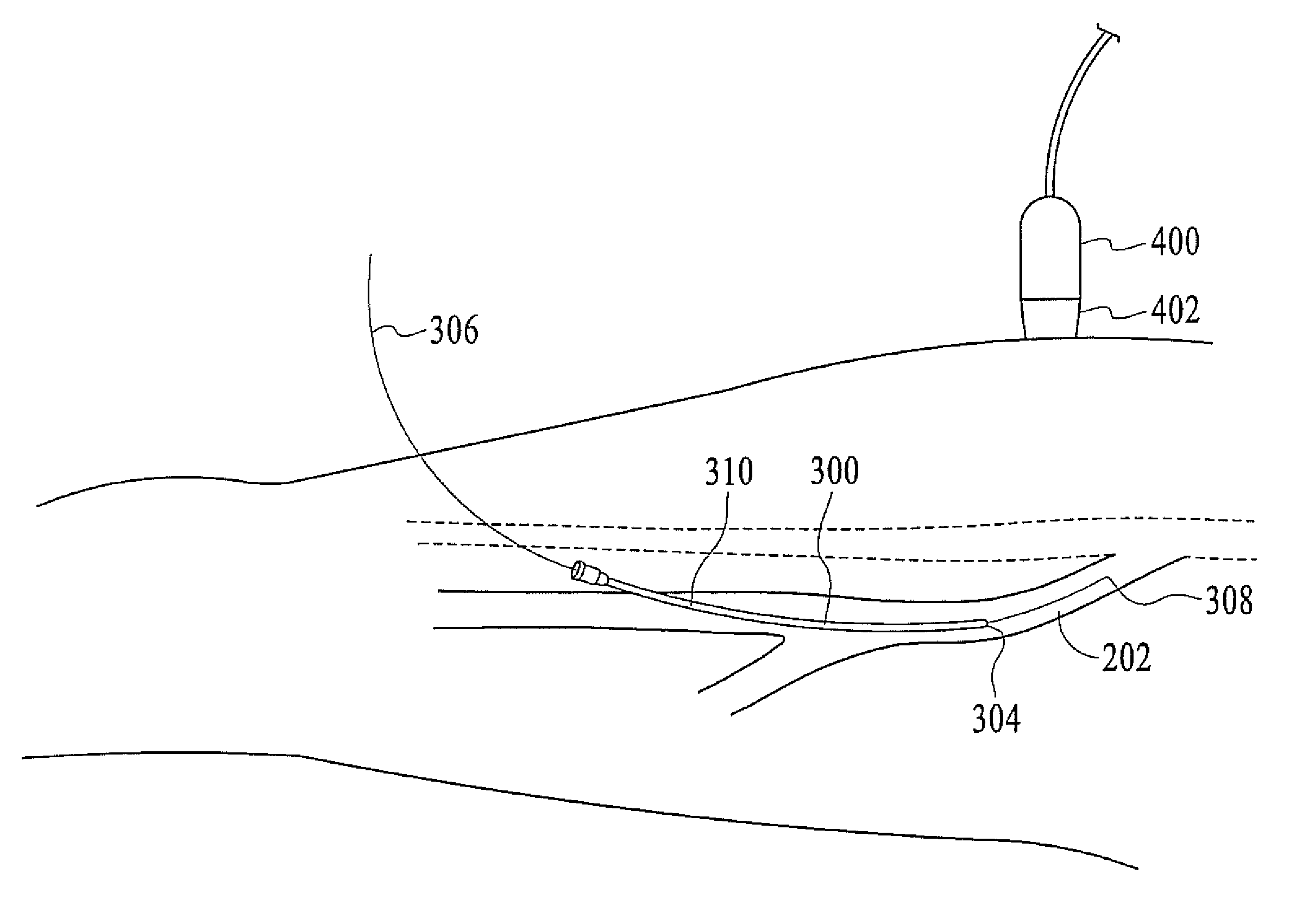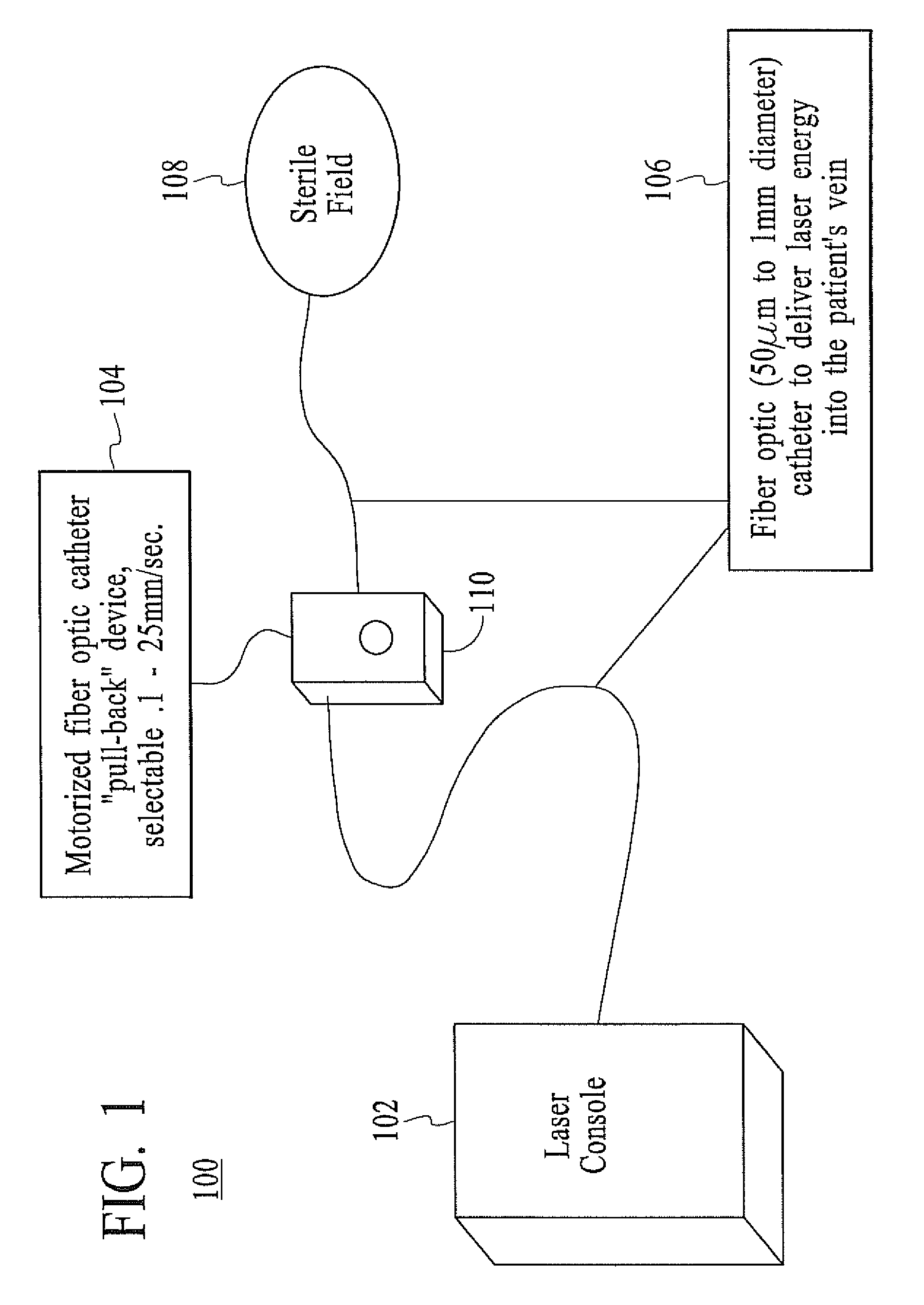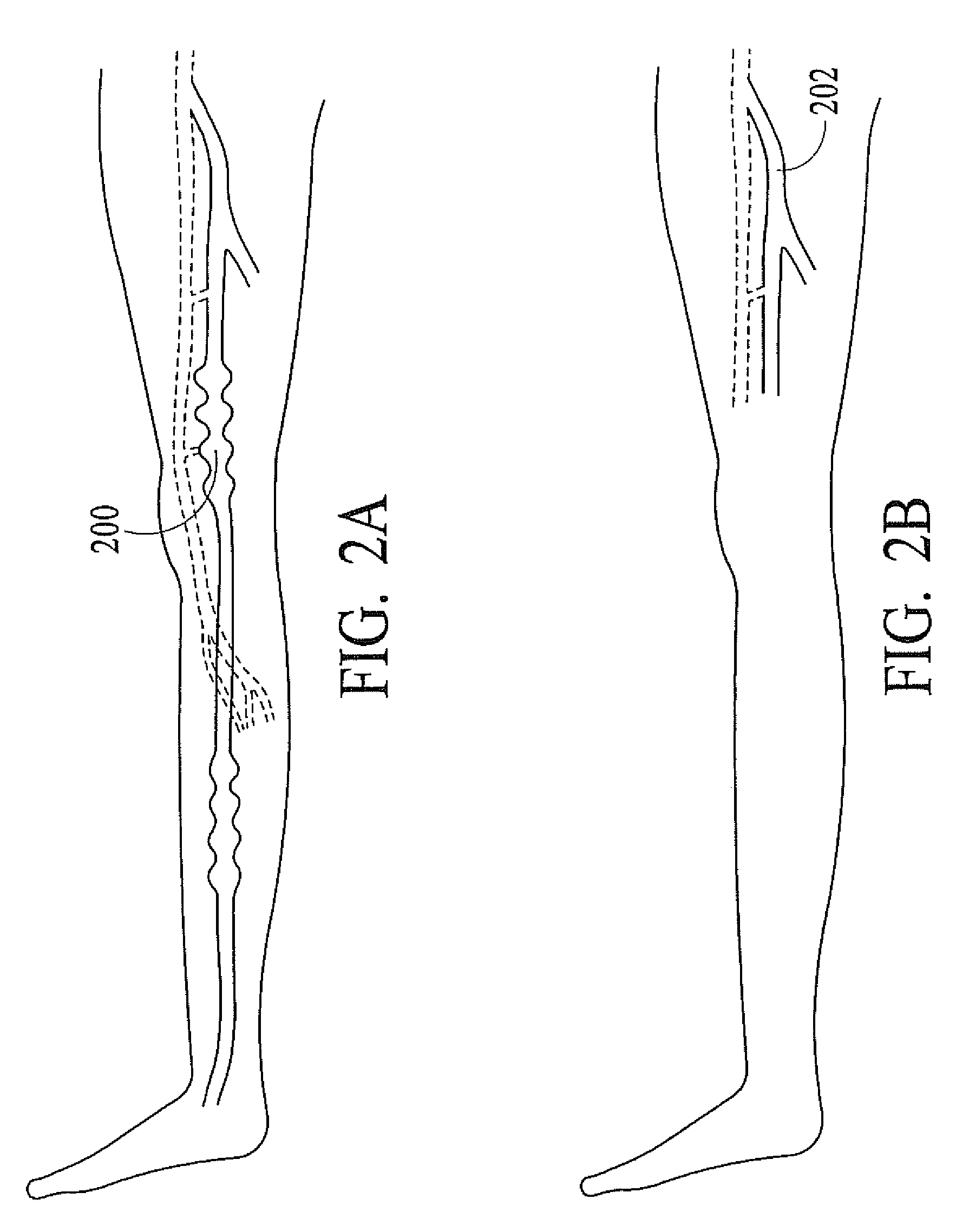Restless leg syndrome treatment
a technology for restless legs and legs, applied in the field of restless leg syndrome treatment, can solve the problems of intense unpleasant sensations deep in the legs, often unrecognized or misdiagnosed, and widely undertreated, and achieve the effect of improving short and long term results and improving the closure of the vessel
- Summary
- Abstract
- Description
- Claims
- Application Information
AI Technical Summary
Benefits of technology
Problems solved by technology
Method used
Image
Examples
Embodiment Construction
[0029]1. Perform and document a thorough exam of all veins contributing to vascular insufficiency and reflux.[0030]2. Obtain percutaneous access of the vessel being treated using a Seldinger Technique. The length and size access devices will vary depending on the length and size of vein being treated and the fiber selected.[0031]3. Advance catheter[0032]Advance the catheter through the introducer sheath until it is approximately 1-2 cm below the saphenofemoral junction (SFJ) or the saphenopopliteal junction (SPJ) or at the appropriate distance based on the junction or vein being treated.[0033]Confirm position of the catheter tip with ultrasound.[0034]Visualize the aiming beam through the patient's skin (the room lights may need to be darkened at this point for adequate visualization).[0035]4. Once the catheter is in the desired position, the following methods should be used to reduce vein size:[0036]Position patient in 20°-30° Trendelenburg or equivalent. It will be understood that ...
PUM
 Login to View More
Login to View More Abstract
Description
Claims
Application Information
 Login to View More
Login to View More - Generate Ideas
- Intellectual Property
- Life Sciences
- Materials
- Tech Scout
- Unparalleled Data Quality
- Higher Quality Content
- 60% Fewer Hallucinations
Browse by: Latest US Patents, China's latest patents, Technical Efficacy Thesaurus, Application Domain, Technology Topic, Popular Technical Reports.
© 2025 PatSnap. All rights reserved.Legal|Privacy policy|Modern Slavery Act Transparency Statement|Sitemap|About US| Contact US: help@patsnap.com



